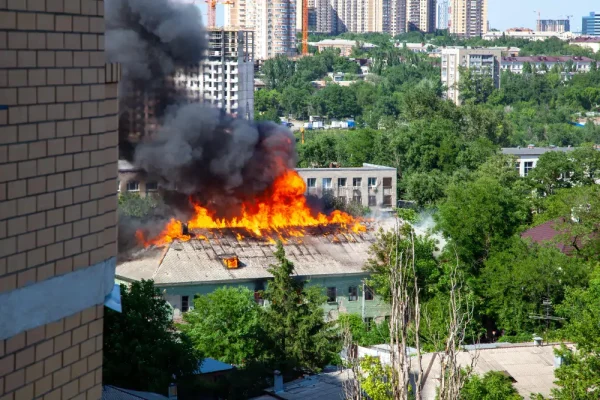Green Buildings and Fire Safety: Balancing Sustainability and Protection
When we talk about the future of construction in India, two things instantly come to mind: sustainability and safety. Green buildings are becoming the new norm across cities like Delhi, Mumbai, Bengaluru, and Hyderabad. They save energy, reduce carbon footprints, and create healthier spaces for people. But here’s the real question—while we are busy making our buildings eco-friendly, are we paying equal attention to fire safety?
Let’s dig deeper into how green architecture and fire safety go hand in hand, and why balancing the two is essential for India’s urban future.
What Exactly Are Green Buildings?
A green building is designed to minimize environmental impact. It uses natural lighting, better ventilation, energy-efficient systems, and sustainable materials like bamboo, fly ash bricks, or recycled wood. In India, certifications like IGBC (Indian Green Building Council) and LEED (Leadership in Energy and Environmental Design) are common benchmarks for sustainable construction.
But here’s the twist: many of these eco-friendly materials and designs also introduce new fire risks. For example, lightweight recycled materials may burn faster than traditional concrete. That’s where fire safety planning steps in.
At first glance, green building design and fire safety seem like two completely different goals. One is about saving the planet, the other is about saving lives. But if you think about it, both share the same foundation—protection and responsibility.
- Sustainability protects nature.
- Fire safety protects people and property.
A building cannot truly be “green” if it ignores fire safety, because any fire incident can erase years of sustainability efforts in just a few minutes.
Also read: Easy Upgrades to Improve Fire Safety in Your Building.

Fire Safety Challenges in Green Buildings
While green buildings are innovative, they also create unique challenges for fire safety professionals:
1. Use of New Materials
Materials like recycled plastics, lightweight composites, or wood-based panels may perform well in sustainability scores but can be more flammable.
2. Energy Storage Systems
Solar panels and battery storage systems are great for clean energy, but they also increase the risk of electrical fires if not installed or maintained properly.
3. Tighter Building Envelopes
Green designs often seal buildings tightly to save energy. But this can make smoke harder to control during a fire, increasing danger for occupants.
4. Innovative Designs
Open atriums, vertical gardens, and skylights look great and reduce energy usage, but they can complicate evacuation routes or sprinkler layouts.
Balancing Act: How to Make Green Buildings Fire-Safe
The goal is not to choose between green construction and fire safety—it’s to integrate them. Here are some ways India can strike the balance:
1. Fire-Safe Sustainable Materials
Builders need to focus on eco-friendly materials that are also fire-resistant. For example, using treated bamboo instead of untreated, or fire-rated glass instead of regular glass.
2. Smarter Energy Systems
Solar panels and battery banks should follow strict fire codes. Proper wiring, fire-rated enclosures, and regular maintenance checks can prevent electrical accidents.
3. Advanced Fire Detection and Suppression
Installing intelligent fire detection systems that sense heat, smoke, and even toxic gases is essential. Water mist systems or eco-friendly fire suppressants can replace traditional methods without harming the environment.
4. Green Fire Safety Regulations
India’s National Building Code (NBC) already lays down fire safety rules, but green building projects should include additional sustainability-linked fire safety audits.
5. Training and Awareness
Even the smartest building won’t help if occupants don’t know what to do during an emergency. Regular fire drills, evacuation training, and awareness campaigns are crucial.
Why This Matters for India
India is one of the fastest-growing countries in terms of urban infrastructure. Cities are pushing hard for net-zero energy buildings and smart cities, but at the same time, fire incidents in residential and commercial complexes are making headlines almost every month.
Think about it:
- A green-certified mall in Mumbai or Gurgaon may save 30% energy, but if it doesn’t have robust fire exits, it’s putting thousands of visitors at risk.
- An office building in Bengaluru may showcase rooftop solar panels, but without proper electrical fire suppression, it could become a ticking time bomb.
So, fire safety isn’t just a regulatory requirement—it’s a public trust factor. People feel safer living, working, and shopping in spaces that care about both the environment and human life.
The Role of Fire Safety Professionals
In the green building movement, fire safety engineers and consultants play a bigger role than ever before. They act as the bridge between architects, developers, and sustainability experts. From choosing the right fire-retardant materials to designing evacuation routes for complex structures, their expertise ensures that eco-friendly doesn’t mean unsafe.
Organizations like FSIE (Fire & Security India Expo) bring together stakeholders from the fire, safety, and sustainability industries. Such platforms help spread awareness about the importance of balancing green goals with fire safety practices.
Future of Fire-Safe Green Buildings in India
Looking ahead, technology will play a big role in shaping safe, sustainable spaces:
AI-based Fire Detection – Early warning systems using AI and IoT sensors.
Eco-Friendly Fire Suppression – Water mist and clean agent systems that reduce environmental damage.
Digital Twin Simulations – Virtual models of buildings to test fire behavior before construction.
Smart Evacuation Systems – Dynamic signage and real-time guidance to help people escape safely.
These innovations will allow India to move towards a future where sustainability and safety are not competing priorities but complementary goals.
Also read: What is building security and why is it important
Final Thoughts
Green buildings are not just about saving electricity bills or earning certifications. They represent a lifestyle change—living responsibly with respect for both people and the planet. But sustainability without fire safety is incomplete.
As India continues to rise as a leader in smart cities, eco-friendly construction, and sustainable development, we must also make sure every building is fire-resilient. After all, protecting the environment and protecting human lives should always go hand in hand.
So, the next time you walk into a modern green building in Delhi, Mumbai, or Bengaluru, ask yourself: Does this place not only save energy but also keep people safe from fire?
Because a truly green future is also a safe future.
